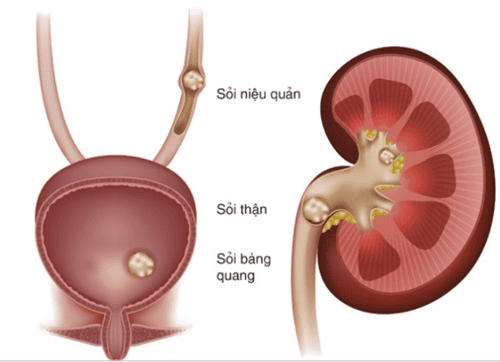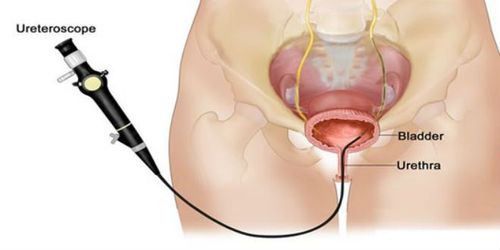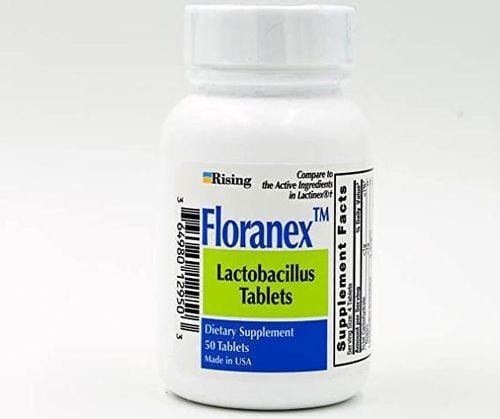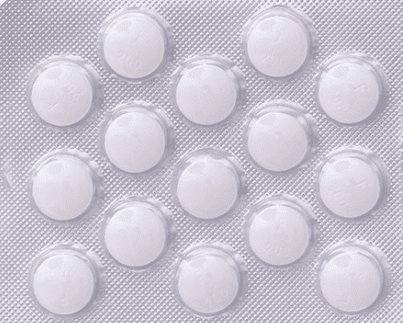This is an automatically translated article.
Laparoscopic bladder stone surgery is a highly safe and effective minimally invasive intervention for the treatment of bladder stones. The mechanism of action of this method is to help dissolve bladder stones with a laser and all the debris will be removed without requiring any incisions.
1. What is the indication for laparoscopic bladder stone surgery?
Stones form in the bladder due to incomplete emptying of the bladder, causing urinary retention and/or chronic bladder infection. Over time, urine that is not expelled will begin to accumulate bacteria and more mucus, sediment and minerals in the urine, eventually leading to the formation of bladder stones.
This condition is indicative of laparoscopic bladder stone surgery. Laparoscopic surgical options for patients with symptomatic bladder stones include stone removal or laser lithotripsy. Bladder anatomy along with urethral size, bladder stone size, and body habits all play a major role in determining surgical outcomes and methods. In addition, whether a prostate procedure is necessary at the time of stone removal is also important to note for men with prostate enlargement and bladder stones.
Compared with open surgery as before, laparoscopic bladder stone surgery has undergone a strong development process and achieved many advantages. Bladder stones removed by making an open incision can now be dispersed into smaller pieces and removed through a natural opening of the urethra, avoiding both pain and recovery. open incision.

Trình trạng bị sỏi bàng quang cần chỉ định mổ nội soi sỏi bàng quang
2. How to prepare for laparoscopic surgery for bladder stones?
Important to the indications for laparoscopic cystectomy is evidence of the presence of operative stones in the bladder lumen. This evidence is demonstrated through the history, physical examination and especially on ultrasound, radiographs with bladder stones as well as computed tomography or magnetic resonance imaging.
Once the date of surgery is determined, the patient will have a pre-anesthetic examination, preoperative risk assessment, based on age, medical history and surgical risk. Specifically, the patient needs a general physical examination, an electrocardiogram, a complete blood count and coagulation function as well as other preoperative tests according to the location.
There are certain medications that should be avoided before surgery, at least 7-10 days, as they can alter platelet function or the body's ability to clot and thus may contribute to unwanted bleeding. want during or after surgery.
The patient does not need to prepare the bowel when performing laparoscopic bladder stone surgery but needs to fast from midnight the day before the surgery.
3. Laparoscopic surgery for bladder stones
Laparoscopic bladder stone surgery is performed when the patient is under general anesthesia. The surgeon inserts a small tube with a light down the urethra and into the bladder. The entire space in the bladder will be observed on the television screen with the signal conduction to the outside. Once located, the bladder stone can be removed with an instrument through the urethra.
If the bladder stone is large and/or if the urethral diameter is narrow, this lesion requires lithotripsy. By using a laser, the bladder stones will be fragmented into many smaller pieces. These fragments are then irrigated and washed out of the bladder through the urethra. In most cases, to ensure complete drainage, a urinary catheter (foley) needs to be left in the bladder for several days after surgery.

Nội soi sỏi bàng quang
4. Complications that may be encountered during laparoscopic bladder stone surgery
As with any major surgery, complications, although rare, can occur with laparoscopic cystectomy, including:
Bladder contractions or pain Because of the requirement to keep a urinary catheter a plastic (foley) in the bladder after the procedure, allowing urine to always go into a bag; a plastic ball that holds the catheter in place can cause rubbing against the lining of the bladder, leading to bladder spasms and uncomfortable for the patient.
These contractions are usually in remission which will subside with time. At the same time, there are also medications that can be used to treat bladder spasms as a reflex caused by the insertion of a foley tube.
Recurrent stones Many patients who have undergone laparoscopic bladder stone surgery have recurrent bladder stones for some reason, including urinary retention or chronic urinary tract infections.
Laparoscopic bladder stone removal surgery does not cure chronic urinary retention, but it can help the bladder empty better.
Stone fragments Stones that remain in the bladder are definitely a risk after stone dissection and dilation. Furthermore, this risk is proportional to the size of the stone removed.
Perforation of the bladder The bladder is a hollow viscera with a rather thick wall, so it is very rare to be completely perforated, but it is inevitable that tears and scratches of the mucosa can be avoided during laparoscopic bladder stone surgery.
Mild lesions can heal with time. But if a large perforation occurs, the urologist may decide to stop the procedure and consider re-intervention on another day when the bladder has had time to heal.
In cases where a perforation of the bladder is suspected to have occurred, an urgent cystectomy will be necessary to close the hole in the bladder using suture material. A urinary catheter will be left in place for several weeks until the bladder hole has had time to heal.
Injury to the urethra or ureters During the removal of the stone, the fragment may cut or tear the urethra. This is usually self-limiting but can sometimes lead to urethral stricture or bleeding.
There are two openings in the bladder to carry urine from the kidney through the ureter. Although uncommon, bladder lithotripsy by direct laser beam can also injure the ureter.
Hematuria and infection Almost all patients experience hematuria within a few days after stone surgery. Urinary tract infections can certainly also occur when a stone is broken due to bacteria secreted from the surface of the stone. These complications are usually self-limited or require treatment with antibiotics and aggressive fluid resuscitation to increase urine output.

Bệnh nhân thường bị tiểu ra máu sau khi mổ sỏi bàng quang
5.Postoperative care after laparoscopic bladder stone surgery
After finishing laparoscopic bladder stone surgery, the patient will be transferred to the recovery room. A urinary catheter (foley) placed during surgery will need to be left in place for several days.
Once the pain can be controlled, the patient will be removed from the recovery room, transferred to a regular ward until the catheter is removed and returned home.
Blood in the urine may occur in the first few days after laparoscopic bladder stone surgery. Over time and increased fluid rehydration, urine will slowly turn red to pink and then clear.
Due to the risk of the interventional procedure, most patients will be prescribed 4-5 days of oral antibiotics to prevent urinary tract infections.
In short, laparoscopic bladder stone surgery is a way of using a laparoscope to be inserted into the bladder to locate stones. The doctor will dissolve bladder stones to crush them and easily remove them out naturally. Because there are no incisions on the body, patients after laparoscopic bladder stone surgery have the opportunity to recover faster, minimizing the risks associated with surgery. However, to achieve the success of the surgery, the patient needs to be indicated for the appropriate laparoscopic bladder stone surgery as well as the professional intervention process and thorough and comprehensive postoperative care.
Please dial HOTLINE for more information or register for an appointment HERE. Download MyVinmec app to make appointments faster and to manage your bookings easily.
Reference source: static1.squarespace.com












